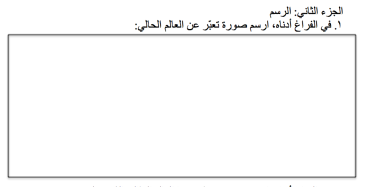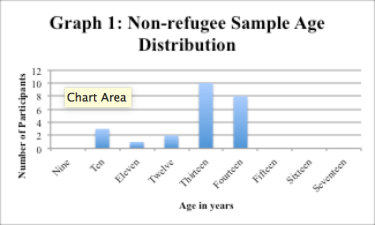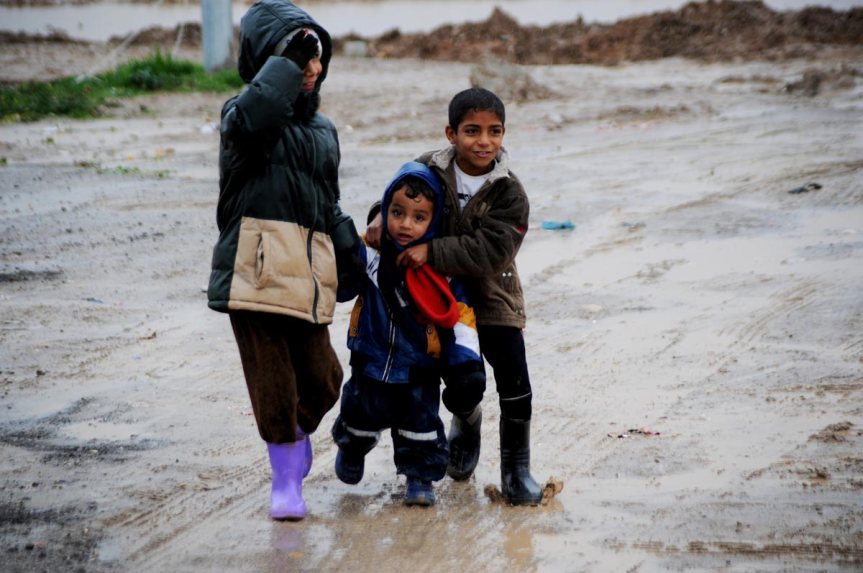Zaid Tabaza
Breakdown of Questionnaire
The questionnaire consisted of three sections, each to measure a specific area in children psychology:
- Word-completion Task: the first section of the questionnaire was a simple task asking the participants to complete a set of incomplete word fragments (10 fragments) using the first letters that occurs to them to make meaningful, valid words. This test was designed to measure the participants’ tendency towards violence. All chosen fragments had the potential of being completed into a aggressive (negative) term, a positive term or sometimes a neutral term. This part was adapted from an accredited method used to measure different tendencies, including the propensity to be aggressive. (Moss, 2016) The task was originally done in English, but was localized to Arabic in order to avoid any difficulties for the participants to finish the task given that they have different levels of proficiency in English. Below is a copy of this task.
![]()
![]()

For instance, the word fragment ـ نابل can be completed into سنابل (meaning flower spikes), قنابل (meaning bombs), تنابل (meaning stupid) or حنابل (meaning fur). The answer حنابل is considered a neutral word, meanwhile سنابل is considered a positive one, and تنابل or قنابل are considered to be indicative of aggressive behavior. The table below shows the possible anticipated responses for each fragment and what they correspond to.
Table 2: Possible Responses for Question 1 and Their Interpretations
| Fragment |
Aggressive |
Positive |
Neutral |
| ـ نابل |
قنابل |
سنابل |
حنابل، تنابل |
| ـ رّاء |
ضرّاء |
سرّاء، قرّاء |
حرّاء |
| ـ لاك |
هلاك |
ملاك |
— |
| ـ بر |
قبر |
صبر |
حبر، جبر، عبر، خبر |
| ـ رح |
جرح |
فرح، مرح |
شرح، طرح، |
| يق ـ ل |
يقتل |
يقبل |
يقول |
| ـ مار |
دمار، حمار |
ثمار |
عمار |
| ـ ـ ور |
قبور |
سرور، صبور |
أمور |
| ــ أس |
فأس |
كأس |
رأس |
| ـ رب |
حرب، ضرب، هرب |
طرب |
عرب، شرب، درب، قرب، غرب |
Method of evaluation: Each response sheet was evaluated with a percentage grade that ranges from -100% to 100%, where 0 is considered neutral, -100% is extremely violent and 100 is extremely non-violent. The responses were evaluated according to the following guidelines:
- A neutral term corresponds to 0 points.
- An aggressive term corresponds to -1 points.
- A positive term corresponds to +1 points.
- Any non-words or omitted responses were disregarded in evaluation.
- The points were accumulated and calculated out of the total number of valid responses. (If all fragments are completed and the words are valid, the total is 10) The answer was then converted to a percentage, by multiplying the fraction by 100.
- Drawing section: the second part of the questionnaire was a drawing section, where participants were asked to complete two tasks. The first task asked the participants to draw a picture illustrating their perception of the current world. The second task asked the participants to draw a picture portraying their dream world. (It could be anything they aspire for or dream of). The pictures below are copies of the two tasks.

![]()
![]()

![]()
![]()
![]()
This section was designed to examine the subjects’ perception of the current world, and their dreams and aspirations for the future. An analysis of the respondents’ drawings as well as a comparison between both groups is provided in the discussion section.
- Section 3: Deriving Conclusions: The third and final section of the questionnaire presented the subjects with three common topics in the form of extracts, with each extract followed by three statements summarizing one of the main ideas in the paragraph One statement encapsulates a neutral aspect of the topic, one statement captures a positive aspect, and one statement is about the negative aspect of the topic. Subjects were asked to choose the sentence that best describes the paragraph. In other words, they were asked to select the idea that they best remembered about the topic.
For example, the first topic was about Syria. The first statement was that Syria is an Arab Republic, whose capital is Damascus, which is considered to be amongst the oldest cities in the world. This sentence was considered to be neutral. The second statement claims that the Syrian cuisine as a very famous and elegant cuisine, containing a variety of delicious dishes. This sentence was accounted for as positive. The final statement describes the Syrian civil war to have led to the prevalence of violence and death. This statement was deemed as negative. The figures below display a copy of this task.

![]()
![]()

![]()
![]()
This section was designed to measure the children’s attitude towards thinking. For instance, a child who chooses the negative statement is likely to be a more negative thinker, whereas a child who selected the neutral statement is a neutralist, and the child who opted for the positive sentences is a more positive thinker.
Method of evaluation: Each response sheet will be evaluated on a scale of -3 to 3, where 3 is very positive thinking, and -3 is very negative thinking. 0 is considered to be neutral. Any score above 0 is positive, and any score below zero is negative. The papers were graded according to the following guidelines:
- Each negative response obtains -1 points.
- Each positive response receives 1 point.
- Neutral responses are accounted for zero points.
- Omitted or unclear answers will not be counted, and the score will be adjusted according to the number of valid responses.
All Copyrights Reserved © 2017










